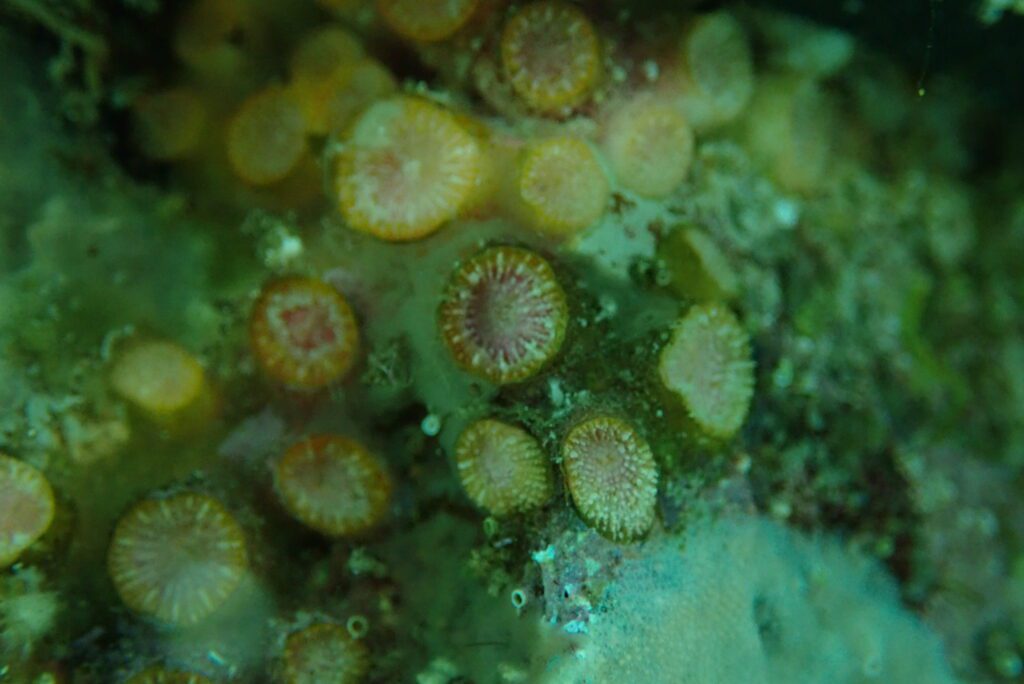Cup Coral
Culicia hoffmeisteri
Cup corals occur in the Order Scleratinia. Despite being hard corals, where the living polyp lays down a calcareous skeleton, they are a non-reef building species that inhabit shaded vertical surfaces down to depths of 238 metres. The individual polyps are arranged in a regular pattern, with the colonies often radiating out from a central point. The coral polyp is soft and delicate with a ring of tentacles in multiples of six, a characteristic of hard corals, and grows like tiny anemones inconspicuously across a hard substrate. Each tentacle is translucent with a white tip and the cup is often a light orange or pink. At night the animal extends its tentacles into the water current where they rely upon capturing zooplankton as food. The individual polyps grow to 5 millimetres in diameter. Cup corals occur on moderately exposed reef from Perth, WA and around the southern coast to Solitary Island, NSW, and around Tasmania.
Occurrence at the Busselton Jetty:
Cup corals are one of the only hard corals that inhabit the piles of the Busselton Jetty. Resembling anemones, the cup coral start to form on the jetty piles after 5 years as individuals but then divide and fan outward in branching lines to cover the pile in densely packed colonies.
Image by: S. Teede
